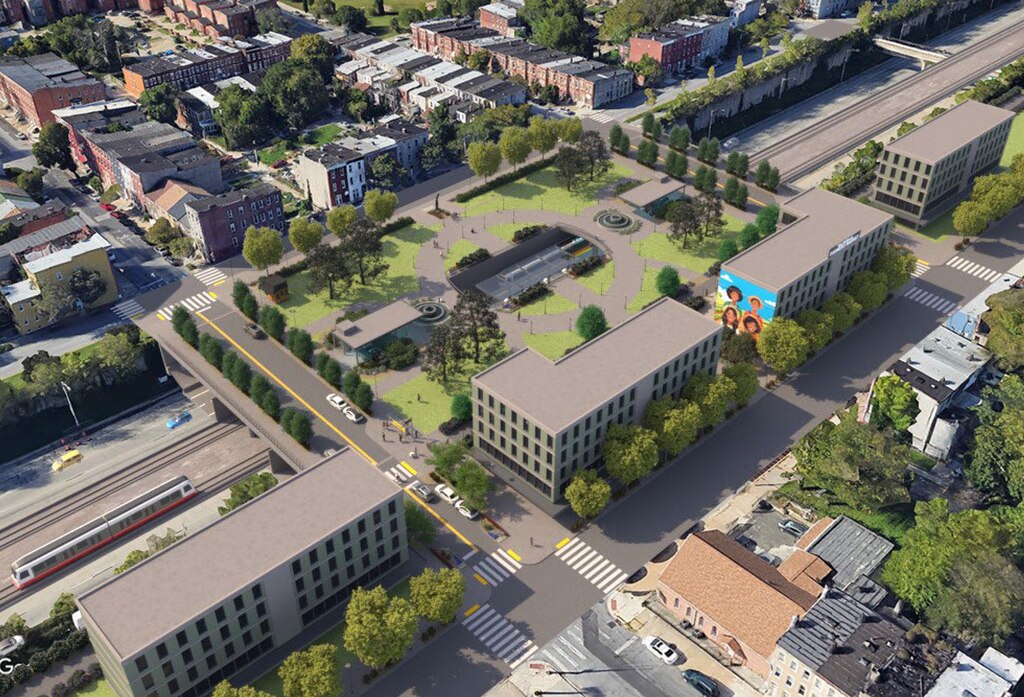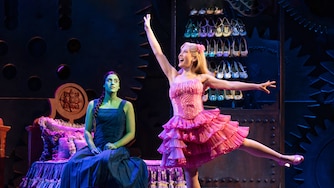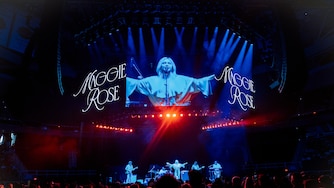The Baltimore City Department of Transportation will receive an $85.5 million federal grant to further its efforts to transform a blighted section of U.S. 40 in West Baltimore dubbed the “Highway to Nowhere,” members of Maryland’s congressional delegation said Tuesday.
The money will spur a two-pronged effort to retrofit a section of the never-finished expressway between Interstate 70 in the west and downtown Baltimore that displaced hundreds of Black families from their homes when it was built decades ago.
The city transportation department applied for a $100 million grant at the end of September through the federal Reconnecting Communities pilot program, opened under the Biden administration, to construct a one-block cap over the recessed highway that could serve as a new “civic space.” Officials also plan to use the money to deconstruct two bridges that carry U.S. 40 over Martin Luther King Jr. Boulevard.
The cap would widen and connect two parallel bridges over the recessed highway, allowing development atop the area while the road passes underneath. It’s aimed at better connecting the neighborhoods to the north and south. It also could serve as a station for the proposed Red Line, an east-west light rail project.
The grant application proposes capping the area between North Calhoun Street and North Carey Street just south of the Harlem Park neighborhood, though that plan is not final.

Though the announcement represents a win for the marquee Baltimore initiative in the waning days of the Biden administration, the blighted corridor’s future is far from solidified.
Read More
Maryland lawmakers sounded off in support of the initiative Tuesday, with Gov. Wes Moore and Baltimore Mayor Brandon Scott thanking Maryland’s U.S. senators and representatives for their work securing the funding. Newly-minted Sen. Angela Alsobrooks called it “the kind of investment in Baltimore we must continue to champion.”
“I won’t stop until we create more living community spaces, build more housing, and restore both neighborhood parks and new hope for reconnecting the Harlem Park, Poppleton and Rosemont communities,” said Rep. Kweisi Mfume, whose district includes much of Baltimore.
The Reconnecting Communities grant program, part of the 2021 bipartisan infrastructure bill, was based on legislation previously proposed by Van Hollen to attempt to reverse the impacts of decades of urban renewal plans that shoved highways into communities nationwide to serve suburban commuters.
Baltimore’s Highway to Nowhere was the inspiration for that bill, Van Hollen said in a Tuesday interview with The Banner. He made sure to remind U.S. Transportation Secretary Pete Buttigieg of what inspired Reconnecting Communities in the first place, he said.
“What I envisioned was the community coming together to develop a plan with the city to reunite the community to address the injustices that were done when the Highway to Nowhere first divided West Baltimore,” Van Hollen said.
The program has funneled money all over for similar projects, including an initiative in Philadelphia to cap a portion of an expressway that cuts through the city’s Chinatown neighborhood.
In 2023, it awarded $2 million to Baltimore to formalize its plan. It helped establish a West Baltimore United Stakeholder Workgroup, a group of about a dozen community members from across the corridor to guide that planning with community priorities.
“We have a community that does not have the necessities that a community that is growing would have ... the amenities that people who live in a thriving community have,” said Janet Allen, a member of the workgroup and part of the Heritage Crossing Resident Association, representing the eastern edge of the highway’s footprint.
“The community knows what it needs, and the community should be able to be a part of the conversation,” said Allen, whose list of what the area needs includes a pharmacy, a supermarket and better schools. She’s hopeful bringing down the highway overpasses will open up developable land for such amenities.
Just west of Allen’s neighborhood, in Harlem Park, residents struggle with the same issues, said Jonathan Susman, another work group member who lives just blocks from the highway. The neighborhood’s vacancy rate is high, and the roads create safety issues caused by speeding and aggressive driving, he said.
“This area having been really torn apart through car infrastructure, I see a lot of potential and opportunity for a dramatic reorientation ... away from cars and toward people,” Susman said.
But Susman and others know that additional federal funding for future phases of the highway’s reimagining and parallel projects could be hard to come by. The multibillion-dollar Red Line, which would use the highway’s right-of-way, will have a new hurdle to jump with the incoming administration of President-elect Donald Trump. Many are starting to lose faith the megaproject will get built, potentially nixing a core component of the highway’s proposed makeover.
And building additional highway caps — the city estimates just the single cap will cost roughly $89 million to build — will come at a high price tag.
“I don’t know where that money would come from,” said Susman, who estimates it would cost roughly $1 billion to cap the entire highway.




Comments
Welcome to The Banner's subscriber-only commenting community. Please review our community guidelines.